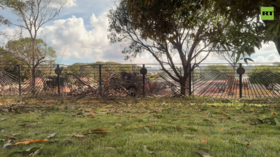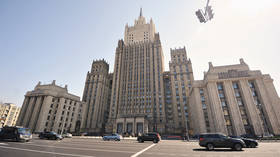The world’s wildlife in peril and it’s time for urgent action
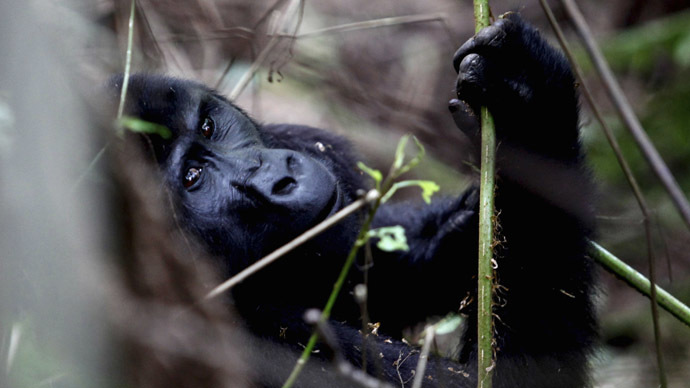
While global attention is focused on #IS, the so-called “terrorist threat,” and the US's latest military action in the Middle East, there was a news story this week which really should have been the lead story everywhere in the world.
The new Living Planet Report paints an alarming picture of the way the earth's wonderful wildlife is disappearing.
Populations of mammals, birds, reptiles, amphibians and fish have declined by a staggering 52 percent in the last forty years. “Put another way, in less than two human generations, population sizes of vertebrate species have dropped by half. These are the living forms that constitute the fabric of the ecosystems which sustain life on Earth – and the barometer of what we are doing to our own planet, our only home,” writes Marco Lambertini, Director General of the World Wildlife Fund, in his introduction to the report.
While marine species have declined by 39 percent, populations of freshwater species have fallen by 76 percent. The African lion population has declined by 90 percent in the last forty years; less than 17,000 now remain. While the situation is bad everywhere, in tropical areas of the world the decline in wildlife numbers has been the greatest. There‘s been a mind-boggling 83 percent decline in populations in Latin America.
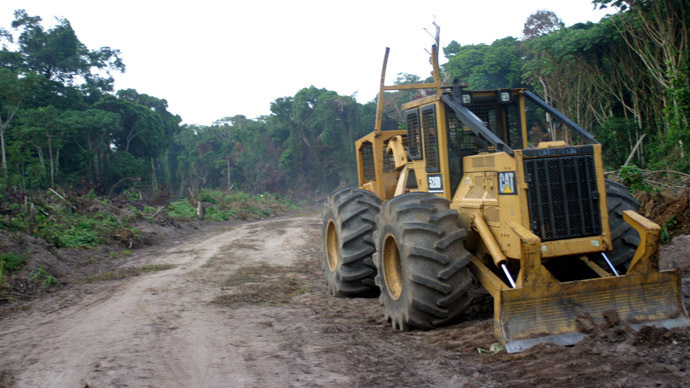
Although there are different factors affecting different species, the core reasons behind this sad and distressing tale of global destruction are the same. We, human beings, are over-exploiting our planet. In 1970, the global human population was 3.7 billion, in 2010 it was up to 6.9 billion (it‘s now around 7.2 billion). The number of humans on the earth has almost doubled at the same time the number of other species has more than halved.
We’re destroying natural habitats on a scale which is truly obscene. More than 20 percent of the Amazonian rain forest has been lost since 1970. Around 17 million hectares of forests are lost each year according to the World Wildlife Fund; around half of the world’s original forests have disappeared.
We’re fishing too much, hunting too much, poaching too much, building too much, polluting too much and generally consuming too much. Modern agricultural methods have also had a very negative impact on biodiversity.
Of course, the catastrophic decline in wildlife populations did not start in the 1970s. Here’s the great sage and author of Brave New World, Aldous Huxley, writing in 1959: “We are wiping out creatures of extraordinary beauty and interest at rapidly increasing rates. If one looks at the statistics compiled by the International Society for the Protection of Nature, one learns that fifty species of mammals only were wiped out during the nineteenth century, forty more have been lost since 1900, and six hundred species are probably doomed to extinction at the present time.”
What would Huxley think now if he could read the new Living Planet report?
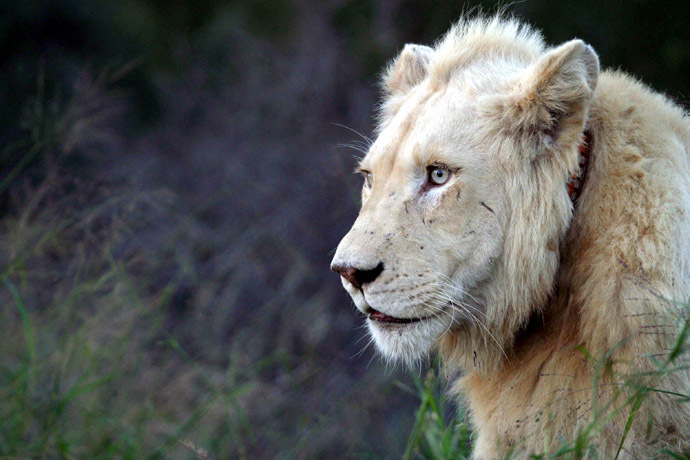
One of the most revealing parts of the report are its tables on the ecological ”Global Footprint” of the individual countries of the world- based on their consumption and efficiency with resources. The ten countries with the worst footprints are:
1. Kuwait
2. Qatar
3. United Arab Emirates
4. Denmark
5. Belgium
6. Trinidad and Tobago
7. Singapore.
8. USA
9. Bahrain
10. Sweden.
Four of the states in the top ten you’ll notice, are Gulf oil producers. Coincidentally three of them (Qatar, UAE and Bahrain) together with another two (Belgium and Denmark) are part of the military coalition put together by another country on the list, the US, to bomb Iraq. There is a strong overlap between the countries who are called “the international community” i.e. the US and its closest allies, and the countries who cause the most environmental damage.
This shouldn't surprise us. The imperialistic, greed-fuelled, ultra-competitive mentality which pushes the elites of the US and their allies to fight endless wars is the same greed-fuelled imperialist mentality that is helping to destroy bio-diversity on the planet. It has its basis in the same arrogant attitude that others, be they other countries or other species, are there to be exploited and used for the imperialists’ benefit. While racism and greed underpins today’s imperialistic wars, human “speciesism” underpins the way we’re destroying the habitats and lives of the wild creatures we share our planet with. It’s based on a belief that we humans have a right to cut down forests and use and exploit wildlife and natural resources for our own purposes, because we are “superior” beings. Well, we may have a higher intelligence, but that doesn't mean we have the right to be so destructive.
We saw this arrogant attitude towards other species in the way that tigers were slaughtered for “sport” in India under the British Raj. National Geographic has quoted historian Mahesh Rangaran who says that “over 80,000 tigers…were slaughtered in 50 years from 1875 to 1925. It is possible that this was only a fraction of the numbers actually slain.” Killing as many tigers as you could was the “trendy” thing to do for well-heeled British visitors to the sub-continent.
Sharon Guynup writes: “After ascending the throne in 1911, King George V and his retinue traveled north to Nepal, slaying 39 tigers in 10 days.”
European royalty have often shown an enthusiasm for killing magnificent wild animals- an obsession which goes on to this day- as I noted in my RT OpEdge article here resources in any way we want can be seen in many other things too. Take this year’s celebrity craze: “the ice bucket challenge.” There’s a global water shortage, and 1bn people have no access to safe drinking water, yet this year so-called “celebrities” have been nominating each other for the “honor” of having buckets of ice water thrown over them, showing us what “great” people they are in raising money for charity.
“What this has led to is a parade of insufferable imbeciles attempting to outdo each other in a desperate bid to increase their popularity,” wrote Paddy McGuffin in the Morning Star.
“There is little more odious than sanctimonious rich people attempting to get other people to donate money to charity, without doing so themselves.”
Of course it's not just rich people in the US and its “international community” allies who are causing the problems.
Although China only comes in at number 75 in the Global Footprint list, the country’s demand for tiger products, for use in traditional Chinese medicine, has had a very negative impact on tiger populations. The website Tigers in Crisis cites the Environmental Investigation Agency, which says that at least one tiger a day is killed for its use in Chinese medicine. It’s not just the Chinese market, Tigers in Crisis claims “Taiwan, Japan, South Korea, the United States, and Great Britain are involved in the tiger trade.”
One hundred years ago there were 100,000 tigers in the wild, now there only 3,200, a fall in numbers of over 95 percent. Three sub-species have become extinct, two since the 1970s. Something has to be done, and done very quickly.
The 2014 Living Planet report provides us with a wake-up call that change is urgently required.
Do we really want to live in a world where there are no wild tigers? No leatherback turtles? No snow leopards, black rhinos or African lions? Where we have destroyed thousands of species of mammals, birds, fish, reptiles and amphibians who had the same right to live on this planet as we do? While some much needed conservation work is already in place and some endangered species have been saved, much, much more is needed, especially given that scientists have predicted that the world‘s human population could rise to 12.3bn by 2100, putting even greater strain on the world’s resources.

Individually, we can all do our own bit by trying as much as possible to reduce our own ecological footprints. We can make sure that the fish we buy is from sustainable sources. We can try and eat less meat; if we have gardens we can make them, or at least part of them, into our own nature reserves. We can try and grow our own food and buy organic products whenever we can. We can cycle rather than take the car to work and try to consume less. We can opt out of the “rat race,” and try not to compete with others over the type of car we’ve got, the sort of house we live in or what up-to-date gadgets we own. If that all sounds a bit hippie-ish- then we have to admit that the hippies of the 1960s were right all along about the need to reconnect with nature and live simpler, less materialistic lives.
We also need to get political. Taking the battle into the political arena is particularly important for those of us who live in countries with the worst Global Footprints. We need to make sure that the impact of any policy, or proposed policy, on wildlife populations is fully discussed.
In Britain for instance, a country which has the 28th worst ecological Global Footprint, politicians, in the run up to the general election, have been competing with each other as to who can pledge to build the most houses. This is despite there being an estimated 845,000 empty homes in the UK, 300,000 of which are long-term empty according to the Empty Homes Statistics 2013. The new house-building will inevitably mean more destruction of natural habitats. Last September, the neo-con Planning Minister Nick Boles, even suggested that we should allow more development in Britain’s National Parks.
Then there’s the danger that is posed to our countryside and our wildlife by the government’s obsession with fracking. Even Tim Farron, the President of the Liberal Democrats, the junior coalition partner, has warned that fracking poses “long-term threats” to the countryside.
Not surprisingly given the amount of building and development in Britain in recent years, not to mention the impact of modern intensive agriculture, our own wildlife is in peril. The numbers of dormice dropped by 43 percent from 1990 to 2010, while hedgehogs, once so common, have declined by a third between 2003 and 2012. Turtle doves, willow tits, grey partridges, harbor seals, corn buntings, adders and Scottish wild cats (of whom there are just 35 left) are among other species under threat. In 2010 it was reported that around half of Britain’s 220 bird species “are of conservation concern.” Last month, a coalition of environmental groups called on the government to change its policies and act to “reverse the decline in British wildlife and the countryside,” but the elite aren’t listening.
Most of our politicians seem oblivious to the way their policies are destroying wildlife and only promise more developments, more houses, and more shopping centers, regardless of whether we really need them. They’re more concerned with fighting foreign wars than saving natural habitats. And of course it’s not just in Britain where this is happening.
It’s a grim, grey future that lies ahead of humankind unless we change course very quickly and start to show a greater humility and respect towards the Earth’s other species, which our destructive, rapacious activities are greatly endangering.
The statements, views and opinions expressed in this column are solely those of the author and do not necessarily represent those of RT.
The statements, views and opinions expressed in this column are solely those of the author and do not necessarily represent those of RT.




